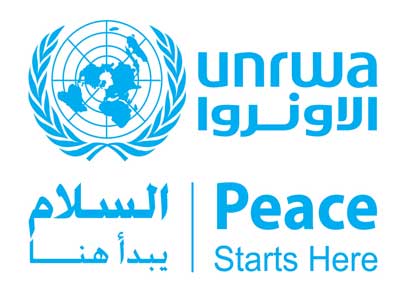 ‘When Israel Is Strong, America Is Strong’: US Politicians Mark Israel’s 77th Independence Day
‘When Israel Is Strong, America Is Strong’: US Politicians Mark Israel’s 77th Independence Day
Corey Walker
 US Rep. Elise Stefanik (R-NY) addressing the Israeli parliament on May 24, 2024. Photo: Office of Congresswoman Elise Stefanik.
US Rep. Elise Stefanik (R-NY) addressing the Israeli parliament on May 24, 2024. Photo: Office of Congresswoman Elise Stefanik.
US politicians across the political aisle congratulated Israel as the Jewish state celebrated the 77th anniversary of its independence, noting the importance of the relationship between the two allies.
On Tuesday night, Israel began observing Yom HaZikaron, its annual Memorial Day which commemorates soldiers killed in battle and victims of terrorism since the state’s founding in 1948. Then on Wednesday night, Israel began celebrating Yom HaAtzmaut, its Independence Day. However, many celebrations were canceled or postponed throughout the country as massive wildfires continued to engulf the Jewish state.
This year’s observance comes at a time of heightened political debate and security concerns amid the war in Gaza escalating tensions with Iran, prompting renewed dialogue on unity and national direction.
US Rep. Elise Stefanik (R-NY) acknowledged Israel’s Independence Day, stating that the holiday represents a testament to the Jewish state’s “strength, spirit, and resilience.”
Stefanik has established herself as a strong ally of the Jewish community. While serving on the House Education and the Workforce Committee, she has lambasted administrators of elite universities for their allegedly mealy-mouthed condemnations of antisemitism and tolerance of anti-Jewish discrimination at their schools. In December 2023, Stefanik engaged in a fiery back-and-forth with the presidents of Harvard University, the University of Pennsylvania, and the Massachusetts Institute of Technology over their handling of a surge in antisemitism on campus.
“As the sun sets and Yom HaZikaron comes to a close, Israel transitions from mourning to joy —honoring the cost of freedom and celebrating its independence and honoring 76 years of strength, spirit, and resilience,” Stefanik said in a statement.
New York City Mayor Eric Adams (D) also issued a statement celebrating Israel’s Independence Day, vowing to continue to use his platform to support the Jewish community.
“Tonight, NYC City Hall shines blue & white as we honor Israel’s 77th Independence Day. We illuminate in celebration of Yom Ha’atzmaut and stand with Israel and our Jewish community today and always,” Adams said.
In recent weeks, Adams has attempted to salvage his fledging mayoral reelection campaign by underscoring the importance of combatting antisemitism. Last week, reports surfaced that he plans on running on an “EndAntiSemitism” ballot line. Adams, who secured his 2021 mayoral victory with a significant amount of Orthodox Jewish support, has repeatedly spoken out about antisemitism in the aftermath of the Oct. 7, 2023, terror attacks throughout Israel.
Sen. Ted Cruz (R-TX) also commemorated Israel’s Independence Day, stating that a strong Israel benefits the United States, and that he will always be a supporter of the Jewish state.
“When Israel is strong, America and the world are strong. I will always stand unequivocally and unapologetically with Israel, our friend and ally,” Cruz said.
Cruz has long been a vocal supporter of Israel, emphasizing the nation’s right to self-defense and sovereignty. In a 2025 address to the Sovereignty Conference in Jerusalem, Cruz affirmed that Israel’s presence in the West Bank is rooted in biblical history and modern legal rights. During a 2021 visit to Israel, he met with Prime Minister Benjamin Netanyahu, stating that Israel not only has the right but a responsibility to defend itself, particularly against threats from Iran and Hamas. Additionally, Cruz has been vocal in criticizing US policies he perceives as undermining Israel’s security, including the administration’s financial dealings with Iran, which he argues have indirectly funded terrorist activities.
New York Gov. Kathy Hochul (D) expressed pride in New York’s substantial Jewish community, adding that she stands “in solidarity” with Israel.
“Tonight, we celebrate Yom Ha’atzmaut and Israel’s 77th Independence Day! New York is proud to be the home of the largest Jewish population outside of Israel, and we’re proud to stand in solidarity with the Israeli people,” Hochul wrote.
Hochul has demonstrated strong support for Israel, particularly in the wake of the Oct. 7 Hamas-led attacks. She led a bipartisan coalition of 17 governors in condemning the massacre and expressing solidarity with Israel, emphasizing the unbreakable bond between the US and the Jewish state. Hochul also visited Israel during the conflict, meeting with victims and officials to reaffirm New York’s commitment. Domestically, she has taken steps to honor victims, such as directing state landmarks to be lit in Israel’s colors and ordering flags at half-staff.
Rep. Brian Mast (R-FL), chairman of the House Foreign Affairs Committee, also marked Israel’s Independence Day with a statement on X/Twitter.
“Seventy-seven years ago, the Jewish people declared sovereignty over their ancestral homeland. Happy Independence Day to Israel — our greatest ally in the Middle East,” Mast posted.
Mast has established himself as one of Israel’s most vocal supporters in Congress, intertwining personal experience with legislative advocacy. Mast, a US Army veteran who lost both legs during a tour in Afghanistan, volunteered with the Israel Defense Forces in 2015. Following the October 2023 Hamas attacks on Israel, Mast donned his IDF uniform on Capitol Hill to express support with the Jewish state. As chair of the House Foreign Affairs Committee, he has championed measures to bolster US-Israel ties, including legislation to prevent US funds from supporting antisemitic education in Gaza.
Zawartość publikowanych artykułów i materiałów nie reprezentuje poglądów ani opinii Reunion’68,
ani też webmastera Blogu Reunion’68, chyba ze jest to wyraźnie zaznaczone.
Twoje uwagi, linki, własne artykuły lub wiadomości prześlij na adres:
webmaster@reunion68.com











